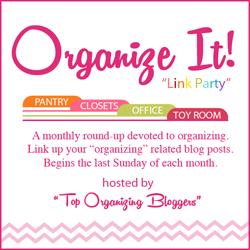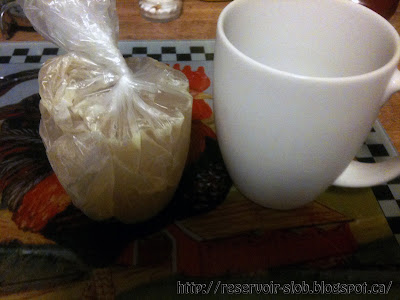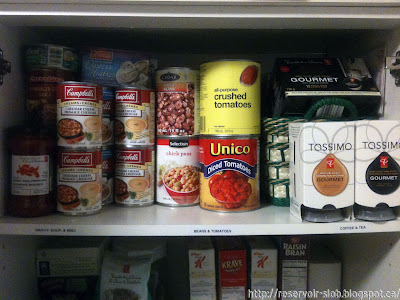 |
| Under cupboard spice storage system |
 |
| View from the front |
 |
| Side view |
 |
| Magnet hot glued to top of spice jar. Labeled at bottom for easy legibility |
Strong magnets were attached to the lids of spice jars using a hot glue gun. I wrote the spice names on address labels and pasted them on the jars.
When all was dry, the jars were attached to the underside of the cupboard with the magnets. They are easy to retrieve when needed and easy to put back when finished.
Currently there are 20 spice jars (seen here) but I have room for 7 more on this piece of metal and will be adding at least 3 more to this group.
If you are just getting started with Evernote, I suggest that you buy Brett Kelly’s remarkably practical e-book, Evernote Essentials, Second Edition. It is worth setting aside a couple hours to work through this brief, 95-page book. It will save you DAYS of learning Evernote on your own.
I have arranged the bottles with the ones I use the most closest to the stove (right) and the ones I use the least further from the stove (left) then by category as well (baking, savory, Italian, etc). You can arrange alphabetically, by colour, by type, or whichever way makes sense to you.
I do have a spice cupboard, that I will be re-organizing in the coming months. In it I keep the rarely used spices as well as the refills for the jars.
See you next Friday!
UPDATE:
I was asked where I picked up the supplies to create this storage solution.
- I had quite a few of the spice jars from a spice rack that we received as a wedding gift 25 years ago. Dollarama sells similar jars and I picked up the extra jars there.
- The spices are usually picked up at the grocery store or Bulk Barn.
- The metal bar that was glued to the under-cupboard, the C-clamps, and the glue came from Rona
- The magnets were from Home Hardware
- The glue gun and hot glue were purchased at Michaels Arts & Crafts
I probably could have purchased all the hardware at Rona or Home Hardware but I did not purchase everything at the same time.
























